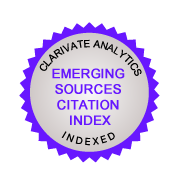THE INCLUSION OF DISASTER RISK REDUCATION IN CLASSROOM AND EXTRA-CURRICULAR ACTIVITIES: A CASE OF RURAL BALOCHISTAN, PAKISTAN
DOI:
https://doi.org/10.32890/mjli2024.21.1.5Keywords:
Teaching DRR, DRR integrated Learning,, Disaster, Learning through Extra-Curricular activitiesAbstract
Purpose – Balochistan, which makes up roughly 44 percent of Pakistan’s total land area, is home to 6 percent of the nation’s inhabitants. Due to long distances and low population density, service delivery is particularly challenging. The province’s educational services are impacted by natural disasters like earthquakes, floods, droughts, and migration. Disaster risk reduction is a widely recognized concept that emphasizes appropriate education to lower an individual’s personal, familial, and communal vulnerability. The role of the school is crucial in Disaster Risk Reducation (DRR) education. As a result, the study’s goal was to explore the approaches adopted for the inclusion of DDR through teaching in classroom and school activities.
Methodology – A focus group discussion with three groups of Pakistan studies and Geography teachers was conducted that consisted
of 10 male and 14 female members.
Findings – Findings demonstrate that the current textbook continues to teach students less about disaster risk reduction; teachers include knowledge from their personal experience in planning lessons about DRR. School assemblies, child clubs and activities designed by school management, and social organizations play a prominent role in DRR education. Further, the role of teachers and school management was identified in psycho-social support during disasters and pandemics.
Significance – The study concludes that in addition to extracurricular activities and the teacher’s role, prior disaster experience, school, and social organization played a significant role in DRR education in rural Balochistan. The study results will assist curriculum
developers, policymakers, and education leadership in developing more effective school disaster management plans. The results will
also clarify how schools and teachers can close the knowledge gap in disaster preparedness education. Organizations working on disaster risk education and education in emergencies will also benefit from additional research to respond to the need readily and effectively.





























